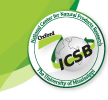Document Type
Oral Presentation
Location
Oxford Convention Center, 102 Ed Perry Boulevard Oxford, MS 38655
Event Website
https://www.oxfordicsb.org/
Start Date
25-4-2023 1:40 PM
Description
Ginseng species are members of the genus Panax and are characterized by the presence of ginsenosides. American ginseng, Asian ginseng, Tienchi ginseng, and red (steamed) Asian ginseng roots and their extracts are very popular ingredients of dietary supplements. Quality control of ginseng dietary supplement products and differentiation of different ginseng articles are important for guaranty of quality and correct labeling. USP monographs for different ginsengs provide quality control procedures with suitable reference standards (RS) to help ensure correct and qualified ginseng ingredients are used.
USP ginseng monographs include both UHPLC and HPTLC identification tests of ginsenosides, which can efficiently identify different ginseng roots species, ginseng powders and ginseng extracts, and distinguish each ginseng ingredient from others. The major differences among them includes the following: Asian ginseng root contains ginsenoside Rf, which can differentiate it from American ginseng and Tienchi ginseng roots, while Tienchi ginseng root contains notoginsenoside R1, which can differentiate it from Asian ginseng and American ginseng roots; Asian ginseng root also contains malonyl ginsenosides Rb1, Rb2 and Rc but red Asian ginseng root does not contain malonyl ginsenosides because it is obtained by steaming the Asian ginseng, which degrades the malonyl ginsenosides. USP Powdered American Ginseng Extract RS, USP Powdered Asian Ginseng Extract RS and USP Panax Notoginseng Root and Rhizome Dry Extract RS are used in related monographs to help identify the UHPLC/HPTLC peaks/bands.
Determination of the total content of ginsenosides provides a surrogate measurement for strength of the ginseng ingredients and its content in dietary supplements. Each USP ginseng monograph includes a UHPLC assay using USP Ginsenoside Rg1 RS and USP Ginsenoside Rb1 RS to quantitate total ginsenosides with the calculation to use relative response factors. The content ratios of ginsenosides also contribute to the identity of different ginseng species and whether the ingredient was steamed.
Recommended Citation
Ma, Cuiying, "USP Monographs for Quality Control of Different Ginsengs" (2023). Oxford ICSB. 5.
https://egrove.olemiss.edu/icsb/2023_ICSB/schedule/5
Publication Date
April 2023
Accessibility Status
Searchable text
Included in
USP Monographs for Quality Control of Different Ginsengs
Oxford Convention Center, 102 Ed Perry Boulevard Oxford, MS 38655
Ginseng species are members of the genus Panax and are characterized by the presence of ginsenosides. American ginseng, Asian ginseng, Tienchi ginseng, and red (steamed) Asian ginseng roots and their extracts are very popular ingredients of dietary supplements. Quality control of ginseng dietary supplement products and differentiation of different ginseng articles are important for guaranty of quality and correct labeling. USP monographs for different ginsengs provide quality control procedures with suitable reference standards (RS) to help ensure correct and qualified ginseng ingredients are used.
USP ginseng monographs include both UHPLC and HPTLC identification tests of ginsenosides, which can efficiently identify different ginseng roots species, ginseng powders and ginseng extracts, and distinguish each ginseng ingredient from others. The major differences among them includes the following: Asian ginseng root contains ginsenoside Rf, which can differentiate it from American ginseng and Tienchi ginseng roots, while Tienchi ginseng root contains notoginsenoside R1, which can differentiate it from Asian ginseng and American ginseng roots; Asian ginseng root also contains malonyl ginsenosides Rb1, Rb2 and Rc but red Asian ginseng root does not contain malonyl ginsenosides because it is obtained by steaming the Asian ginseng, which degrades the malonyl ginsenosides. USP Powdered American Ginseng Extract RS, USP Powdered Asian Ginseng Extract RS and USP Panax Notoginseng Root and Rhizome Dry Extract RS are used in related monographs to help identify the UHPLC/HPTLC peaks/bands.
Determination of the total content of ginsenosides provides a surrogate measurement for strength of the ginseng ingredients and its content in dietary supplements. Each USP ginseng monograph includes a UHPLC assay using USP Ginsenoside Rg1 RS and USP Ginsenoside Rb1 RS to quantitate total ginsenosides with the calculation to use relative response factors. The content ratios of ginsenosides also contribute to the identity of different ginseng species and whether the ingredient was steamed.
https://egrove.olemiss.edu/icsb/2023_ICSB/schedule/5


Comments
Acknowledgments:
▸National Eng. Lab for TCM Standardization, Shanghai Institute of Materia Medica, Chinese Academy of Sciences, Shanghai, China
▸USP Analytical Development Laboratory, Rockville, MD, USA
▸Dr. Gabriel I. Giancaspro from Science, Documentary Standards and Compendial Policy, USP
▸Dr. Virginia S. Goldman from Science, Dietary Supplements and Herbal Medicines, USP